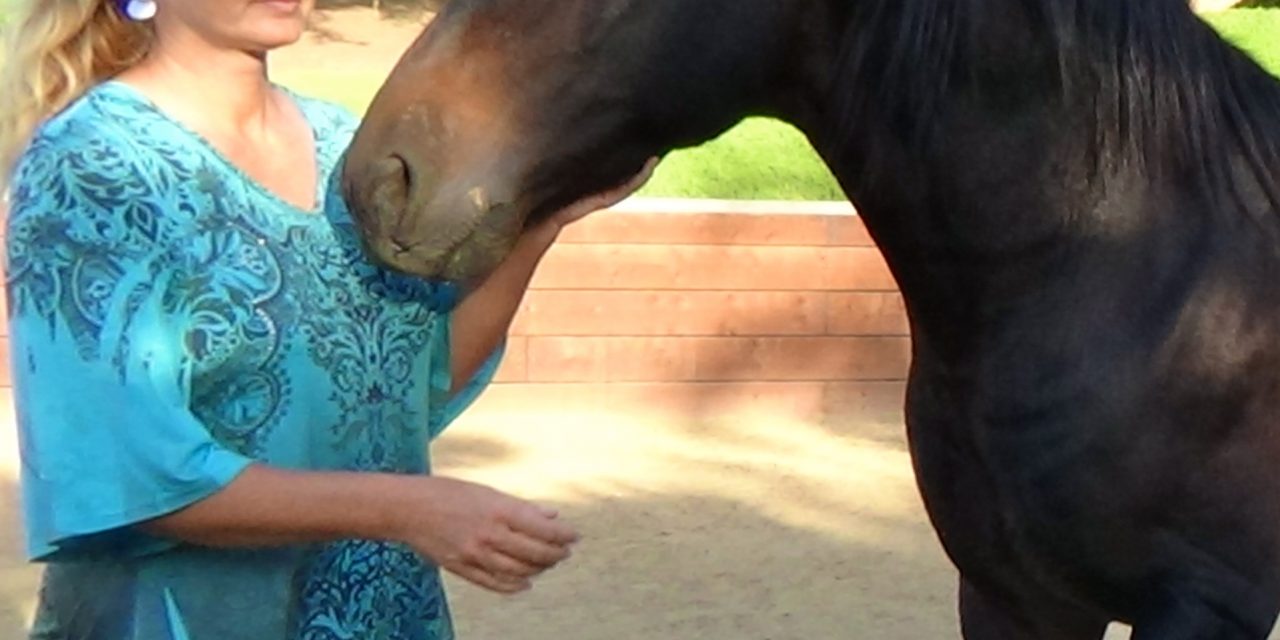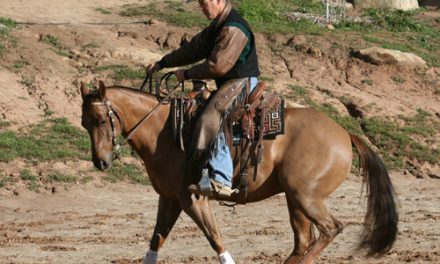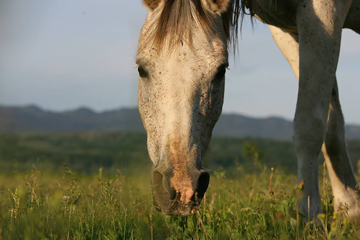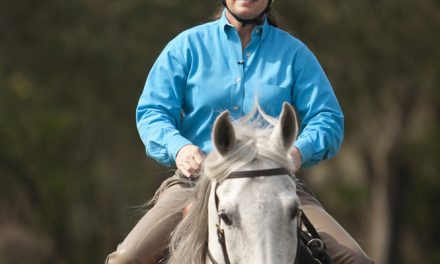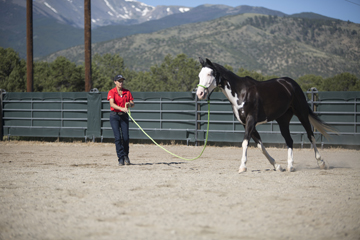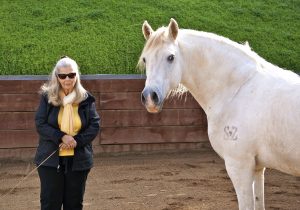 Leading a Horse Properly is Important for Performance
Leading a Horse Properly is Important for Performance
It is surprising to me to see well-trained dressage horses leading from place to place as badly as they do. Leading is such a valuable tool for the connection and relaxation you have with a horse when you ride, especially a dressage horse. A horse can be well trained, but if the willingness and acceptance are not there the performance suffers and so does the horse.
When I had my training center in Sonoma California I found out how important it is to a horse’s performance under saddle to train a horse how to lead in hand properly. My students had noticed that when I had the horse truly trained to leading from the ground in all circumstances, it greatly improved the horse’s performance in competition.
I got so interested in the act of leading a horse as a valuable tool that I got people to form social groups to walk together in nature in order to help improve their connection and relationship with their horse. This activity was an enjoyable activity for both the horse and the owner.
Walking in nature with friends creates a social activity that horses miss out on from being in captivity. The Waterhole Rituals give an added social interaction to a horse that brings them well being. You might like to take my online program on the Waterhole Rituals and enjoy having fun learning about the true nature of your own horse and how to train your horse through relationship building and communication. We will be starting another online class in the Waterhole Rituals in spring of 2013 – April 21st, 2013. If you have taken the class before I recommend that you take the class again to benefit further in your connection and understanding of horses and your training of them.
Leading with the Horse by your Side or Behind you?
Leading a horse should look like a dance when the horse is matching your movements, as if you are sharing the same mind set and wanting to reach the same destination at the same time, enjoying each others company in the process. From this practice you will become more understanding of the unity and harmony you can share with your horse.
There are different approaches about where we should put a horse when we are leading him. Some of us lead a horse by having the horse walk behind us and others ask a horse to walk next to them.
I want to offer some suggestions to people that are sitting on the fence in which to choose. Since I train at Liberty before using tack and work with the magnetic connection that horses are born with, I start out with Companion Walking where the horse matches my movements at my side at Liberty, in the same way a foal would shadow its mother. This way training a horse to lead with tack is easy and the horse does not need to go through being repeatedly pulled sharply around as a way to teach a horse to lead.
In the beginning it is not a hard and fast rule that I keep a horse at my side when I am not in a controlled environment. I try for the side but if it serves the connection better I will also let the horse walk behind me. In the beginning it can be a little of both going to new places where a horse is a bit distracted in the new environment. Let’s say if I have a horse that is reluctant to go forward, I will get a longer rope and ask him to join me and then when he doesn’t I pretend that he is coming along with me by walking forward leaving his side and walking in the direction that I want my horse to go. I do this while keeping a soft connection on my line and feeding out the rope longer and longer so that I can keep moving forward, as I encourage my horse with clucking and kissing sounds. The body language I use is to show relaxation and intention. I do not look back and most times my horses will come along with me.
If the horse is balking and unresponsive I will then turn and face him and start taking more contact slowly until I have taken enough contact that I can stretch out his head so it would cause him to pull back slightly. If the horse then chooses to pull more, and he will, I go with him and keep the same amount of pressure on the line, like a bungee cord would. I cluck and kiss to encourage a response and if no positive response is given I then release my pull very slowly. This release will cause a positive reaction from your horse. It takes a “feel”. You can pick up this “feel” easily through trial and error. I will go up to my horse and stay with him a while to help the horse relax and enjoy being with me. Then I walk back to were I would be about ten feet away from my horse and can again put pressure on the line. It is what I call a floating hold. If my horse pulls harder and starts to back up, I give enough to keep the same pressure on the rope. When the horse pulls more I do not want the horse to feel more pressure but I also do not want him to get out of the pull either. After a short time I release to a slack line very slowly and then join my horse’s side and wait with him until he feels a connection with me, is relaxed and has lost his resistance. My horse at some point will choose to come along with me, when this happens I will encourage him to trot to a destination where I have a treat. I will then repeat the process by taking him back a few feet past the spot where he balked, where is was relaxed and willing, and repeat the process until it is smooth and there is no resistance.
Trial and Error
The most important aspect working with your horse is to make up your own approach through trial and error working between pausing, asking and releasing. Make sure that your horse is well trained in Companion Walking at Liberty and with tack in a controlled environment before trying to take your horse to some place new where he might balk. Finding out the formula that brings out the willingness in your horse is much more fun than getting aggressive and fighting your horse’s resistance.
I think a lot of times people revert to getting tough because they think it is the only way to fix the immediate problem that they are having with their horse. If a person trusted using my method as a way of approaching a horse, trying to work it out with a horse by using care-taking horsemanship, I think that they would choose the softer way.
Another approach in working with a balking horse is to stand in front of the horse about ten feet away looking directly at him on a slack reign. When he looks away from you, take the slack out of the rope and have him turn his head so he his standing and looking straight at you, then put slack back in the rope. Keep doing this until he walks up to you. When he does pat him to connect with him and offer him a treat if you like. This will work in most cases, but it will take as long as it will take. It is important not to have expectations.
Here is a virtual training situation for you to solve:
Let’s say you acquired a horse that was determined to balk, not leading away from the barn or any place you wanted to go. He likes to balk because it is deeply in his bones to do so, even if it makes no sense. You cannot drive him forward from behind, you cannot plead with him and no known training method is working. How would you solve this problem?
My virtual horse I will call Browny the balking mule – even though he is a horse. He is big like a draft horse and he likes to use his strength against you by refusing to go forward. He also loves to show off by standing his ground or walking off and taking you with him. What would you do to correct this problem? How would you get him to give up his balking behavior in a gentle way?
Stay tuned for the next lesson and my answer…
Have a great weekend, watch out for new horse and human sighting and may the horse be with you and not balk along the trail.
Warmly,
Carolyn
http://www.carolynresnickblog.com

